I believe you're correct in that there isn't an easy way to do welch corrected anova with resampling, but it should be possible to hobble a few things together to make it work.
require('Ecdat')
I'll use the “Star” dataset from the “Ecdat" package which looks at the effects of small class sizes on standardized test scores.
star<-Star
attach(star)
head(star)
tmathssk treadssk classk totexpk sex freelunk race schidkn
2 473 447 small.class 7 girl no white 63
3 536 450 small.class 21 girl no black 20
5 463 439 regular.with.aide 0 boy yes black 19
11 559 448 regular 16 boy no white 69
12 489 447 small.class 5 boy yes white 79
13 454 431 regular 8 boy yes white 5
Some exploratory analysis:
#bloxplots
boxplot(treadssk ~ classk, ylab="Total Reading Scaled Score")
title("Reading Scores by Class Size")

#histograms
hist(treadssk, xlab="Total Reading Scaled Score")

Run regular anova
model1 = aov(treadssk ~ classk, data = star)
summary(model1)
Df Sum Sq Mean Sq F value Pr(>F)
classk 2 37201 18601 18.54 9.44e-09 ***
Residuals 5745 5764478 1003
---
Signif. codes: 0 ‘***’ 0.001 ‘**’ 0.01 ‘*’ 0.05 ‘.’ 0.1 ‘ ’ 1
A look at the anova residuals
#qqplot
qqnorm(residuals(model1),ylab="Reading Scaled Score")
qqline(residuals(model1),ylab="Reading Scaled Score")

qqplot shows that ANOVA residuals deviate from the normal qqline
#Fitted Y vs. Residuals
plot(fitted(model1), residuals(model1))

Fitted Y vs. Residuals shows converging trend in the residuals, can test with a Shapiro-Wilk test just to be sure
shapiro.test(treadssk[1:5000]) #shapiro.test contrained to sample sizes between 3 and 5000
Shapiro-Wilk normality test
data: treadssk[1:5000]
W = 0.92256, p-value < 2.2e-16
Just confirms that we aren't going to be able to assume a normal distribution.
We can use bootstrap to estimate the true F-dist.
#Bootstrap version (with 10,000 iterations)
mean_read = mean(treadssk)
grpA = treadssk[classk=="regular"] - mean_read[1]
grpB = treadssk[classk=="small.class"] - mean_read[2]
grpC = treadssk[classk=="regular.with.aide"] - mean_read[3]
sim_classk <- classk
R = 10000
sim_Fstar = numeric(R)
for (i in 1:R) {
groupA = sample(grpA, size=2000, replace=T)
groupB = sample(grpB, size=1733, replace=T)
groupC = sample(grpC, size=2015, replace=T)
sim_score = c(groupA,groupB,groupC)
sim_data = data.frame(sim_score,sim_classk)
}
Now we need to get the set of unique pairs of the Group factor
allPairs <- expand.grid(levels(sim_data$sim_classk), levels(sim_data$sim_classk))
## http://stackoverflow.com/questions/28574006/unique-combination-of-two-columns-in-r/28574136#28574136
allPairs <- unique(t(apply(allPairs, 1, sort)))
allPairs <- allPairs[ allPairs[,1] != allPairs[,2], ]
allPairs
[,1] [,2]
[1,] "regular" "small.class"
[2,] "regular" "regular.with.aide"
[3,] "regular.with.aide" "small.class"
Since oneway.test() applies a Welch correction by default, we can use that on our simulated data.
allResults <- apply(allPairs, 1, function(p) {
#http://stackoverflow.com/questions/28587498/post-hoc-tests-for-one-way-anova-with-welchs-correction-in-r
dat <- sim_data[sim_data$sim_classk %in% p, ]
ret <- oneway.test(sim_score ~ sim_classk, data = sim_data, na.action = na.omit)
ret$sim_classk <- p
ret
})
length(allResults)
[1] 3
allResults[[1]]
One-way analysis of means (not assuming equal variances)
data: sim_score and sim_classk
F = 1.7741, num df = 2.0, denom df = 1305.9, p-value = 0.170



